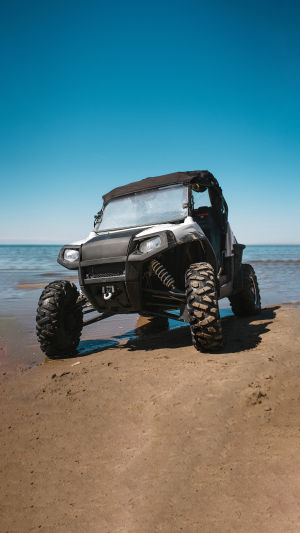When we talk about off-road vehicles, we cover a very challenging and diverse category of cars. Off-road vehicles are designed to perform well in a variety of harsh road and terrain conditions, from rugged mountain passes to muddy swamps to remote deserts.
Their superior performance comes from several key factors, including powertrain, chassis, suspension, and tires. This article will take an in-depth look at these elements and how they affect the performance and off-road capabilities of your off-road vehicle.
At the same time, we will also introduce different types of off-road vehicles, such as SUVs, trucks, and Jeeps, as well as the characteristics and history of each brand to help you better understand this fascinating automotive field.
1. Sport Utility Vehicle:
- Features: SUV is a versatile car type, usually with four-wheel drive, higher ground clearance, and a larger body, making it suitable for a variety of roads and terrains.
They typically have large interior spaces for multiple passengers and cargo, making them popular with families and outdoor enthusiasts.
- History: SUVs date back to the early 20th century, but they became extremely popular in the late 1990s and early 2000s.
Many car manufacturers have begun to produce various types of SUVs, from small to large, to meet the needs of different consumers. Some of the famous SUV manufacturers include Toyota, Honda, Ford, Chevrolet, and Nissan, among others.
2. Pickup Truck:
- Features: A truck is a type of vehicle with an open cargo box, usually used for carrying cargo and transportation. They typically have powerful engines and four-wheel drive to handle a variety of work tasks and off-road conditions. Trucks also come in numerous sizes and configurations, including single- and double-cab seating.
- History: The history of trucks in the United States dates back to the early 20th century, but they became especially popular in the mid-20th century. Many famous truck manufacturers include Ford, Chevrolet, Dodge, Nissan, and Toyota, among others. Trucks have become a part of American culture, used not only for work but also for leisure and off-road activities.
3. Jeep:
- Features: Jeep is a car with strong off-road performance, usually used for adventure and off-road driving. They feature four-wheel drive, high ground clearance, and a rugged chassis to handle rough terrain and harsh weather conditions. Jeeps often feature iconic round headlights and a rich heritage.
Jeep’s iconic models include the Jeep Cherokee, Jeep Grand Cherokee, Jeep Wrangler, and more. The Jeep brand has always been known for its rugged performance and off-road heritage.
The performance and off-road capabilities of an off-road vehicle are affected by several factors, including the powertrain, chassis, suspension, and tires. These factors are discussed below and how they affect the performance of an off-road vehicle:
1. Power system:
- Four-wheel drive (4WD) or full-time all-wheel drive (AWD) is standard on the off-roader, allowing power to all four wheels. This provides better traction, allowing the off-road vehicle to travel over uneven terrain such as mud, snow, or desert.
- A powerful engine can provide enough power to overcome steep slopes and obstacles. High-torque engines (especially diesel engines) generally provide more pulling power at low speeds.
- An electric four-wheel-drive system provides more precise control, distributing power to individual tires as needed to maximize traction.
2. Chassis:
- High ground clearance is one of the key features of an off-road vehicle, allowing the vehicle to negotiate obstacles of varying heights, such as large rocks or tree roots. Some off-road vehicles even have adjustable ride heights to suit different road conditions.
- Steel chassis guards protect the underside of the vehicle from impact and damage, especially in rough terrain.
3. Suspension:
- Off-road vehicles usually have strong suspension systems to absorb bumps and shocks, providing a smoother driving experience. Independent front suspension and multi-link rear suspension are common configurations.
- Long-travel suspension allows the vehicle's tires to better adapt to uneven surfaces, providing better traction and comfort.
4. Tires:
- Off-road vehicles are often equipped with off-road tires whose tread pattern has deep grooves to provide better traction while also being self-cleaning to avoid muddy slides.
- Lower tire pressure improves the performance of off-road tires because they can better adapt to uneven terrain. However, make sure your tires are properly inflated when driving on the road to avoid unnecessary wear and inefficiency.
The combination of these factors can significantly affect an off-road vehicle's performance and off-road capabilities. A well-designed off-road vehicle will perform well in a variety of harsh conditions, including mud, mountains, snow, and deserts.
Therefore, when purchasing an off-road vehicle, consumers should consider these factors and select the appropriate configuration and features based on their intended use.





